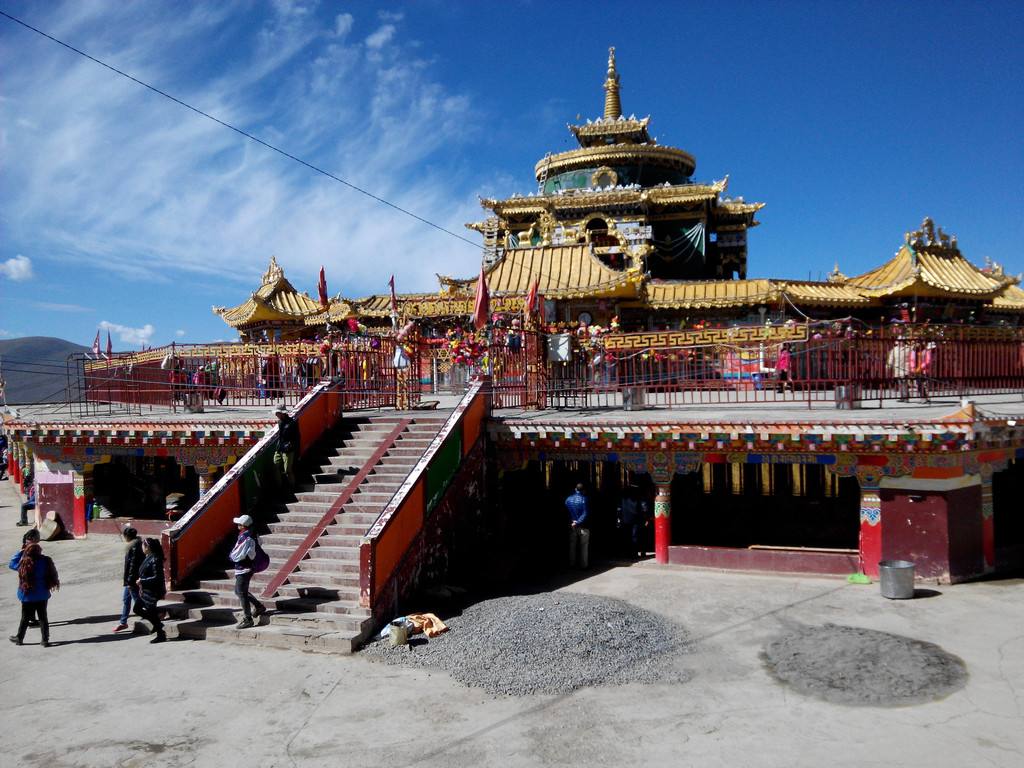24 Hours Hotline: +8613735411378
Email:chengdu@tripstoshanghai.com
24 Hours Hotline: +8613735411378
Email:chengdu@tripstoshanghai.com

Huiyuan Monestery
Huiyuan Monestery is called "Gadaxiangbalin" in Tibetan. In 1729 ad, the Qing government asked the seventh Dalai Lama "gesanggyatso" to take refuge in Tibet because of the unstable situation in Tibet. Since then, because the 11th Dalai Lama "kezhujiacuo" was born here, Huiyuan temple has a profound influence in Tibetan areas.
Background
The initial Huiyuan Temple was built in 1729 when the Zungar (a Mongolian tribe) forces invaded Tibet. For the safety of the 7th Dalai Lama, the government of the Qing Dynasty made a great appropriation and order hundreds of Chinese and Tibetan workers to build the temple. After the completion of the temple, Emperor Yongzheng named the temple and wrote a plaque with the Chinese characters "???" (Huiyuan Temple). The 7th Dalai Lama lived in the temple for 7 years.
The original Huiyuan Temple was in a grand scale and with unique buildings which combines the styles of the Tibetan temples and Chinese temples in other places. It covered 50,000 square meters and had more than 1,000 monk chambers. The temple was encircled by 3 walls from the inside to the outside. The entrance of the main hall of the temple with 9 lifelike dragons (stand for the central government of Qing Dynasty) and 9 lions (stand for the Tibetan local government who carried out political system of combining religious with political rule). This hall made the temple known to home and abroad. In 1838, the 11th Dalai Lama was born at the nearby village of the temple, which added more high reputation on the temple.
Structure
Historically, Huiyuan Temple has 3-time reconstructions. Some major buildings were once destroyed during the Cultural Revolution (1966 - 1976). The present temple was reconstructed in 1980s. It is as large as the original temple in size.
It is known for its grand buildings, cultural relics, and some historical stone steles in Tibetan, Chinese, and Manchu languages. 208 monks live in the temple today. The temple is where all prayer meetings and ceremonial activities are held. Some famous are Molanqinbu (in January), Yaque (in June) and Anque (in November). During the prayer meetings, the tourists and Buddhism believers meet here to chant scriptures, pray for good blessings, and watch the rites of dancing to exorcise demons.
Information
Address: Daofu County, Ganzi Tibetan Autonomous Prefecture, Sichuan Province
Admission Fee: Free
Wechat: Chinaprivatetour
24 Hours Hotline:
+8613735411378
(Your Privacy is Protected)
1 to 1 tailor-made service from our professional travel advisors for the most sophisticated
Constantly excellent reviews for attraction, hotel and service Competitive price
Local experts provide quality tours Best selected knowledgeable local guides Authentic local restaurants
7*24 hours available to create you a worry-free tour. No Hidden Fees and absolutely no pressure to buy. Secured







